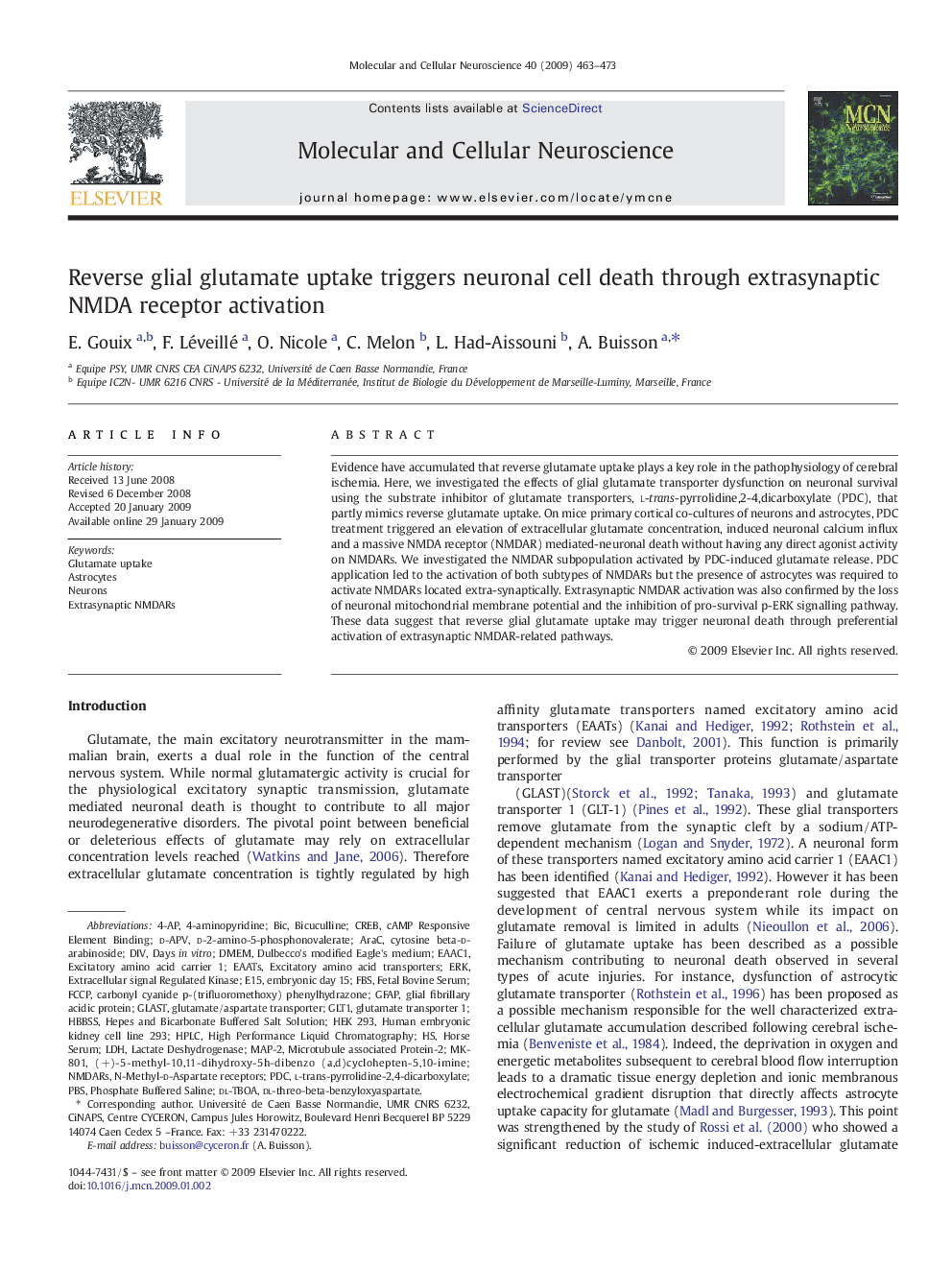| Article ID | Journal | Published Year | Pages | File Type |
|---|---|---|---|---|
| 2198889 | Molecular and Cellular Neuroscience | 2009 | 11 Pages |
Evidence have accumulated that reverse glutamate uptake plays a key role in the pathophysiology of cerebral ischemia. Here, we investigated the effects of glial glutamate transporter dysfunction on neuronal survival using the substrate inhibitor of glutamate transporters, l-trans-pyrrolidine,2-4,dicarboxylate (PDC), that partly mimics reverse glutamate uptake. On mice primary cortical co-cultures of neurons and astrocytes, PDC treatment triggered an elevation of extracellular glutamate concentration, induced neuronal calcium influx and a massive NMDA receptor (NMDAR) mediated-neuronal death without having any direct agonist activity on NMDARs. We investigated the NMDAR subpopulation activated by PDC-induced glutamate release. PDC application led to the activation of both subtypes of NMDARs but the presence of astrocytes was required to activate NMDARs located extra-synaptically. Extrasynaptic NMDAR activation was also confirmed by the loss of neuronal mitochondrial membrane potential and the inhibition of pro-survival p-ERK signalling pathway. These data suggest that reverse glial glutamate uptake may trigger neuronal death through preferential activation of extrasynaptic NMDAR-related pathways.
